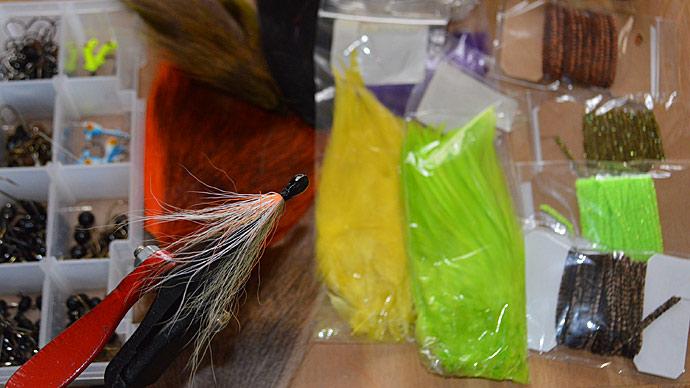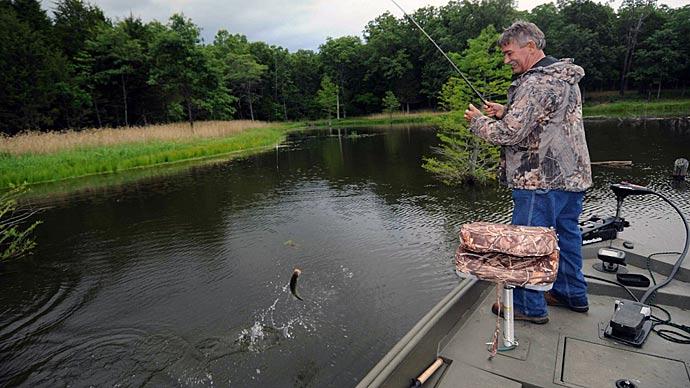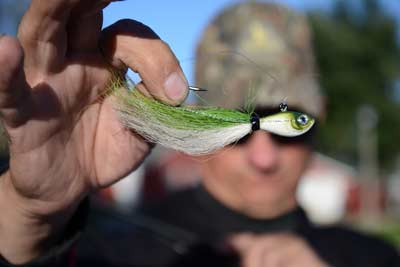
This article will take a step back to the earlier days of bass fishing and focus on the hair jig. In the early years of bass fishing, this was the jig choice of the time because rubber jigs had not been invented yet.
You had two main jigs back then feather and deer hair. Of these two, hair jigs were the primary choice in the early years. Let's break down the hair jig as it's becoming a viable fishing choice once again in some bass circles. You might be a little surprised at what you'll find out.
Hair Is Here To Stay
As years have passed, bass fishermen take fancies to different baits through the fishing seasons. You see some baits come and go, never to be seen again. A prime example of a bait that once dominated the bass scene is a Banjo Minnow. But you have baits that stand the test of time in the same realm, and the hair jig is in that category. Hair jigs have come and gone, but they have never left in some circles. For years I have carried a few hair jigs in my boat. During this time, they see the light of day a few times a year, and I'll flat out tell you a silicone jig is my number one jig choice day in and out. But I'll grab a hair jig during special bite conditions. You could say that I pick up a hair jig when the bite gets tough, as I know it will excel in getting me bites when called upon. That is why I still have hair jigs in my jig mix today.
It's an unspoken secret among some bass fishermen that relied on hair jig years ago. They have an accurate idea of what a hair jig can do at certain times of the year, so they still hold a special place in their jig box.
What Sets Hair Apart
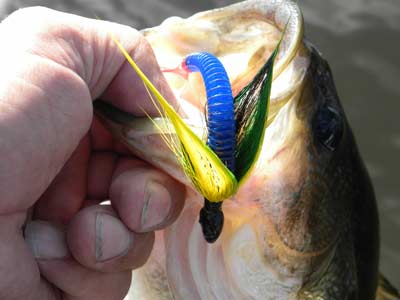
The characteristic of hair is different from rubber or silicone. Rubber, of the three materials, has the least movement. In contrast, silicone has more movement, but that can be attributed to the characteristic of cutting the material thinner than rubber. Hair in the water has more natural movement mimicking live bait better than either rubber or silicone. Thus, the bass see and think of it differently.
Taking a closer look, the hairs are smaller, and one of the most prominent characteristics of hair is that they float, giving the jig more buoyancy and slowing the fall of your jig down. It gives you a realistic look of a dying baitfish as the jig falls. Compared with rubber and silicone, they have a different fall rate and action when fished in the same conditions and situations compared to hair.
Some of this natural falling action will also depend on the jig head that your bucktail jigs are tied on. The top bucktail right now is being offered on a pill head jig. I tie most bucktail jigs on either a ball head jig or a Do It Walleye jig head. I have also tied some hair jigs on a Do-It Arky Jig head if I need a weedless bucktail.
Jig Colors
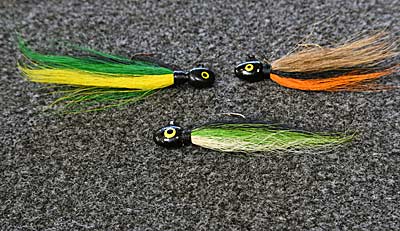
When it comes to colors for bucktails, you're limited to what you can get. That is one of the reasons why I make my jigs. It allows me to mix and match colors more than what's available over the counter. I stock perch and crawfish-colored hair jigs as my number one choices. If I'm fishing a river situation, I'll use a shad color pattern to match baitfish choices that swim in its waters. I also carry a few color choices that aren't standard. I'll grab a few colors that stand out to get my hair jig noticed when and if needed.
Hair Jig Tweaks
When it comes to trailers, I use a few different types, one of my choices is a 4-inch ringworm. I will pick a different color than the jig to create some contrast in my rigging. I also dye the tail with a scented dye to add another attraction. I have also started using a Berkley Max Scent Flat Worm as a hair jig trailer within the last year. A 3-inch Fluke tail also makes a great choice.
I have a trick that I also do from time to time. I'll cut a 5-inch stickbait in half and thread this onto the jig hook (bigger end first). It will flare the hair a little more, giving it more action and movement in the water. I let the extra part of the bait hang out, looking like a tail.

I carry 1/4oz, 3/8oz, and 1/2oz hair jigs in my jig box assortment. I mainly use the 1/4oz hair jig for finesse fishing. I choose to fish this on a spinning setup teamed with braided line and a fluorocarbon leader. The slow fall that I get and the natural action of the hair have generated strikes for me when other finesse lures don't even get a look from finicky bass.
I fish both the 3/8oz and 1/2oz hair jigs on a medium-action baitcaster, so I have both on hand. When it comes to reel and line, my first choice is a braid-to-fluorocarbon line, but if bites are few, I may switch to a monofilament leader to see if I can't generate a few more strikes with a slower fall from my jig.
Hair jigs still have a place in your jig box. However, you have to spend a little time figuring out where they fit best into your fishing style and waters. With so few bass fishermen depending on hair these days, the bass aren't seeing this presentation much.
The next time you're at the tackle shop, explore what they offer for hair jigs, grab a few to match the forage in your waters, and give them a try. You may be a little surprised at what the results are.
BassResource may receive a portion of revenues if you make a purchase using a link above.


